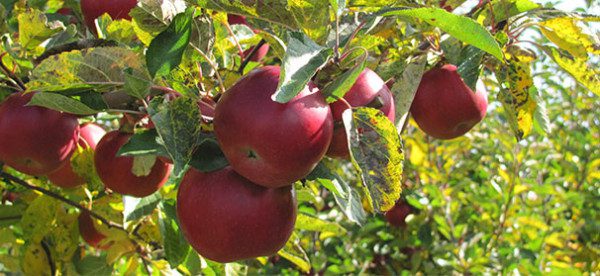

Sep 5, 20132013 U.S. apple crop is up 13 percent
The U.S. Apple Association (USApple) has announced its estimate of the size of the 2013 U.S. apple crop: 243 million bushels.
The estimate was given during the association’s annual Apple Crop Outlook and Marketing Conference, held Aug. 22-23 in Chicago.
The 2013 estimate represents a 13 percent increase over 2012’s final crop of 215 million bushels, and a 9 percent increase over the five-year average (224 million bushels). It’s the largest crop since 2004, according to USDA statistics.
This was the first year the association prepared its estimate without the benefit of a parallel USDA survey, which was suspended due to budget constraints.
“This was a challenging task in light of the USDA not conducting its work this year,” said Mark Seetin, USApple’s director of regulatory and industry affairs.
“The national crop is up from last year, on the whole and countrywide, but I don’t think it’s a burdensome crop at all,” said Phil Glaize owner of Glaize Orchards in Winchester, Va. “It’s only the 13th largest crop this country has ever produced.”
East
In the Eastern states, the 2013 estimate is 58 million bushels, 39 percent greater than the 2012 crop and 6 percent greater than the five-year average.
“The big news is New York and North Carolina have come back with their production this year,” Glaize said.
New York is expected to be up 87 percent, with a total crop of 32,000 bushels. North Carolina should increase 339 percent, to 3,500 bushels.
“The production from North Carolina to New England is skewed a little bit more toward fresh this year,” Glaize said. “Any holes in the crops are basically in the processing plants.
“This year, there are no major quality issues do to weather,” Glaize said. “Sizing is good throughout the region. With an abnormal amount of rain, you might have thought apples are extra large, but I don’t really think we have that. There is a spread of sizes, not too many small ones, with mostly medium-size to medium-large apples.”
Midwest
The Midwest estimate is 35 million bushels, 472 percent greater than 2012 and 61 percent above the five-year average.
“My favorite number is the 996 percent increase in Michigan over last year,” said Mike Rothwell, president of BelleHarvest Sales in Belding, Mich.
“Michigan’s 16 million bushels for a five-year average has been influenced by crop failures in 2008, 2010 and 2012,” Rothwell said. “With the crop fluctuations we’ve had, we no longer have normals, just averages.”
Rothwell said marketers began pushing the 2013 crop earlier this year, looking for new markets with deeper penetration and increased exports.
Production and infrastructure improvements, combined with more cooperative weather, are leading to the crop’s recovery.
“The new state bird for the state of Michigan is going to be the frost fan,” he said. “Hopefully, these fluctuations from size will begin to level off. It almost has to.”
West
In the Western states, the 2013 estimate is 149 million bushels, down 11 percent from 2012 but 1 percent greater than the five-year average.
Washington state will be down 10 percent, to 140 million bushels. This follows a record crop of 154 million bushels in 2012.
“Washington has had some heat with some sunburn,” said Dan Kelly, assistant manager of Washington Growers Clearinghouse. “We’ve also had some hail. After a lengthy discussion about fresh and processing, we’ve come up with 140 million. That will be the second-largest apple crop on record.”
Kelly said Idaho has had issues with tight labor, early frost and a lot of heat. That state’s production was adjusted down to 1 million bushels, a 44 percent decrease from last year and 35 percent below the five-year average.
California’s 2013 estimate of 4.8 million bushels is 33 percent less than 2012’s crop, and 32 percent below the 5-year average.
“They are heavily into their harvest, having gone through a lot of Galas already,” Kelly said. “They’ve had 14 days of 100 degrees or higher heat, and they’re also 14 days early.”














